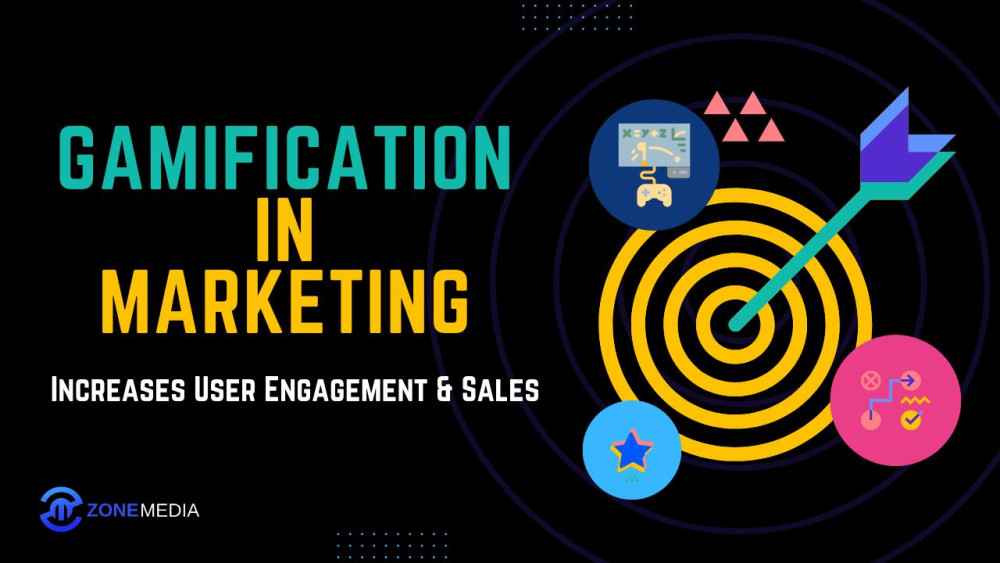In today’s fast-paced digital landscape, capturing and retaining consumer attention has become more challenging than ever. With shorter attention spans and endless options available, brands need innovative ways to engage their audiences. This is where gamification in marketing comes into play. By incorporating game-like elements into marketing campaigns, businesses can drive user engagement, boost sales, and enhance brand loyalty.
What is Gamification in Marketing?
Gamification is the process of integrating game mechanics into non-gaming contexts to encourage participation and engagement. In marketing, this means using elements like rewards, leaderboards, challenges, and progress tracking to make brand interactions more enjoyable and immersive for consumers.
From loyalty programs and interactive quizzes to spin-the-wheel discounts and achievement badges, gamification taps into the psychological triggers that keep users coming back for more.
Why Gamification Works
1. Boosts Engagement and Retention
Gamification introduces fun and interactive elements that make consumers more willing to engage with a brand. Instead of passively consuming ads, users actively participate in a rewarding experience, increasing retention rates and brand recall.
2. Encourages Customer Loyalty
Loyalty programs that incorporate gamification techniques—such as earning points, unlocking tiers, or completing missions—keep customers coming back. These mechanics create a sense of accomplishment and encourage repeat purchases.
3. Drives Sales and Conversions
Limited-time challenges, discounts unlocked through achievements, and referral rewards motivate users to take action. These game mechanics create urgency and excitement, leading to increased conversions and sales.
4. Creates a Competitive Edge
Leaderboards and social sharing features encourage friendly competition among users, amplifying brand exposure. Gamified experiences often encourage users to challenge friends, share achievements, or compete for rewards, expanding the brand’s reach organically.
5. Provides Valuable Consumer Insights
Through gamification, brands can collect crucial data about consumer behaviors, preferences, and engagement levels. This information helps tailor future marketing strategies for better personalization and effectiveness.
Examples of Successful Gamification in Marketing
1. Starbucks Rewards Program
Starbucks has mastered gamification with its tiered rewards system, where customers earn stars for every purchase. These stars unlock free drinks, exclusive offers, and personalized perks, keeping users engaged and encouraging more frequent visits.
2. Duolingo’s Streak System
Language-learning app Duolingo uses streaks, badges, and daily challenges to keep users motivated. Brands in other industries can apply similar gamified elements to maintain consistent user engagement.
3. McDonald’s Monopoly Campaign
McDonald's successfully gamifies its brand with its Monopoly-themed promotions, where customers collect game pieces for a chance to win prizes. This strategy drives repeat purchases and increases customer interaction.
4. Nike Run Club
Nike’s fitness app integrates challenges, achievements, and social leaderboards to engage users in their fitness journey. This not only enhances user retention but also strengthens brand loyalty.
How to Implement Gamification in Your Marketing Strategy
Identify Your Audience’s Motivations – Understand what drives your customers to take action and tailor gamification elements accordingly.
Create Clear and Achievable Goals – Whether it’s unlocking rewards, completing levels, or reaching milestones, make the objectives attainable yet rewarding.
Incorporate Instant Gratification – Offer immediate incentives such as discounts, points, or badges to keep users engaged.
Encourage Social Sharing – Add social features that allow users to showcase their achievements, refer friends, and compete with others.
Track and Optimize Performance – Use analytics to measure engagement, identify what works, and refine the gamification experience.
Conclusion
Gamification in marketing is more than just a trend—it’s a powerful strategy that enhances user engagement, boosts brand loyalty, and drives conversions. By leveraging game mechanics in your campaigns, you can create memorable customer experiences that keep your audience coming back for more. Whether it’s through rewards programs, interactive challenges, or social competitions, gamification has the potential to transform the way brands connect with consumers.
With the right execution, gamification can turn marketing from a passive experience into an engaging, immersive journey that not only attracts users but keeps them engaged and eager to interact with your brand.


